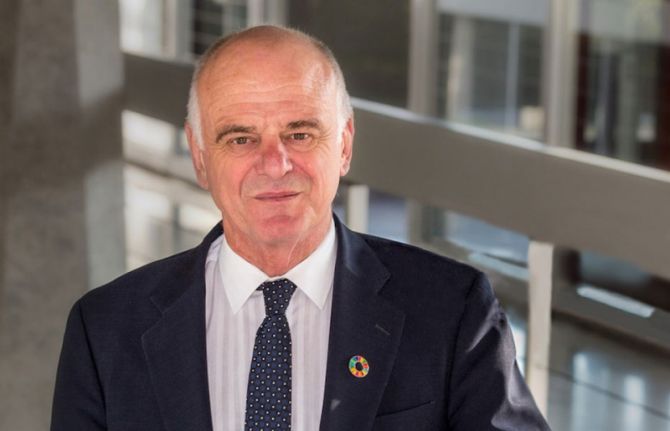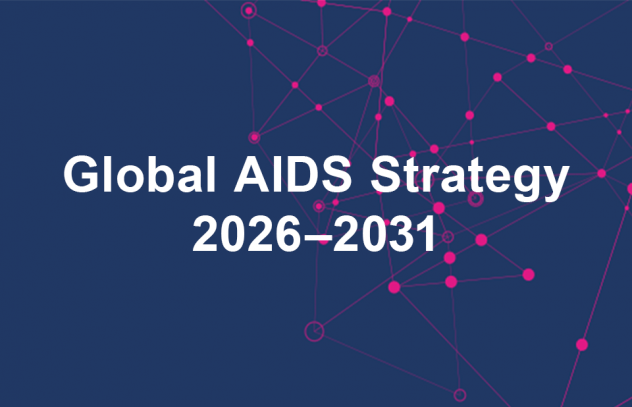

Update
Interview with David Nabarro, candidate for WHO Director-General
24 April 2017
24 April 2017 24 April 2017Question: As Director-General of the World Health Organization, what will be your three priorities to advance progress in ending AIDS by 2030 as part of the Sustainable Development Goals?
The first priority must be to stop tackling HIV/AIDS as an isolated issue and make services for people affected by HIV/AIDS an integral part of universal health coverage, and also linked with services for other chronic diseases.
The second is to review the lessons of work to empower people at risk of HIV/AIDS using a Sustainable Development Goal (SDG) lens and then use the information derived from this review as a basis for mainstreaming HIV-related action across all the SDGs (see below).
Just as the AIDS movement redefined public health between 2000 and 2015, it now needs to help bring public health into the SDGs with a completely new narrative. This narrative must emphasize the interconnections between the SDGs and the need to leave no one behind, and show that health is central to achieving this.
Question: How important do you feel the lessons learned in the AIDS response are in shaping the future of global health?
The response to AIDS taught us a great deal, and was extremely important in shaping global health. First of all, it taught us to focus on the people and patients, as opposed to the medical condition or the virus. By shifting the focus in this way, the movement was effective in engaging civil society and a wide range of actors in combatting the condition, and, importantly, also the stigma attached to it. The second important issue brought to light in the AIDS response was ensuring that all persons at risk—whatever their place in society—were able to have full access to the services they needed: leaving no one behind. Hard work was done to ensure that HIV status, a person’s gender, sexual preference or substance use should never be an excuse for discrimination, which is certainly crucial to all global health areas of work. Thirdly, the AIDS response demonstrated the importance of multistakeholder and intersectoral approaches and broke new ground in providing a good model of how to work in an integrated way across agencies on complex health issues within the United Nations.
Question: As the AIDS response has scaled up to reach millions, one of the key challenges has been the lack of community health workers and the capacity of the health system to deliver services at scale. How will you address the challenge of building up the health system to prepare for the next disease outbreak and to meet current health challenges, including AIDS and noncommunicable diseases?
Governments are increasingly focused on how best to develop health-care infrastructure and staffing so that all people are enabled to access essential health care while—at the same time—ensuring that there are appropriate facilities within which care can be offered to persons who have or are at risk of HIV/AIDS, providing them with health services and lifestyle information. Governments seek to ensure that procurement mechanisms for AIDS medicines work well and enable people in need to access the medicines and take them as directed. They also work hard to ensure the necessary political support to ensure that health infrastructure is rolled out in ways that are sensitive to the needs of people living with HIV. The services offered should take account of the reality that people living with HIV may well end up developing noncommunicable diseases. To this end, national authorities in several countries are looking for ways to incorporate AIDS care within the programmes for chronic diseases. All governments will wish to encourage regional and global collaboration on funding, on technical assistance, on ensuring access to medicines and diagnostics and on securing access to vaccines as they become available.
Question: How will you ensure that people affected by HIV, especially key populations, such as sex workers, gay men and other men who have sex with men, people who inject drugs, transgender people and migrants, are not left behind in efforts to achieve universal health coverage?
I see many examples of health professionals, civil society, faith groups, the United Nations and others with an interest working with governments with a view to reducing the stigma in relation to persons who are at risk of HIV and reducing the extent to which they are subject to discrimination that results in their not being able to have proper access to care. To be better able to do this work, health professionals and other stakeholders need support so that they can practice in ways that reduce stigma and discrimination, need access to evidence, need to be able to interact with the general public and need to be able to work closely with each other in solidarity, as it can be challenging and difficult work associated with setbacks as well as successes.
Question: What does UNAIDS mean to you?
UNAIDS is a very important expression of the spirit and solidarity with which we all need to work together to empower actions that will lead to a reduction of the disadvantage and suffering experienced by people who are at risk of HIV and AIDS, as well as those who are actually affected by the disease. It has had a powerful influence on the behaviour not only of the United Nations system but of the whole community of actors engaged in ensuring equitable access to requirements for HIV/AIDS prevention, diagnosis and treatment.



